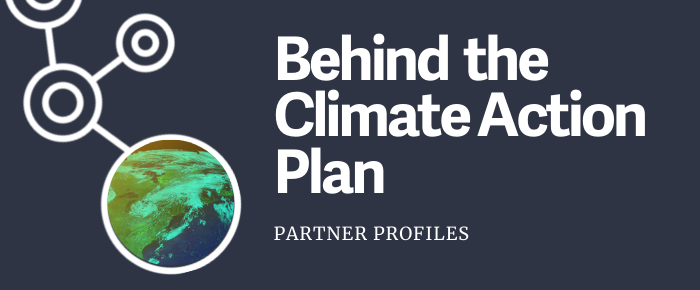
Behind the Climate Action Plan: 3Qs with Jessica Parks, Campus Construction

MIT's operational staff and academic community are key partners to MITOS and in reaching MIT's climate goals. To highlight this, we feature the contributions of operational, academic, and administrative staff in the monthly newsletter, the MITOS Digest, and the Thought Leadership blog. Peek behind the curtain of the climate action plan into the day-to-day implementation of MIT's bold commitments and read Jessica Park's response to 3Qs below.
Jessica Parks
Senior Project Manager, Campus Construction
Working in the Systems Performance & Turnover, Campus Construction group in the Department of Facilities, Jessica is a LEED Accredited Professional (LEED AP ID+C). Jessica as serves as a co-lead on the Fast Forward: Plan for Climate Action team for Building Energy Efficiency.
What is a typical day like for you at MIT?
I am involved in many different initiatives at MIT; however, my main role is as a project manager responsible for executing projects that will reduce energy use in our buildings on Campus. A typical day involves reviewing, organizing, creating, and coordinating information across many different groups of people to successfully bring a project to completion. For example, I am managing the Building 46 Energy Enhancement project, where we are implementing building-wide Energy Conservation Measures (ECMs) that will significantly reduce the energy use of one of our highest energy consumers on campus. This project would not be a success without the collaboration of many different groups and individuals across MIT (DLCs, FEG, EHS, R&M, Provost, etc.), as well as the firms hired to design and construct the project. Working with so many different people on a daily basis and fitting together all of the pieces necessary to execute these projects is one of my favorite parts of this job. For example, ECMs for the 46 Project include adjustments to temperature setpoints, which could impact research. Rather than removing this ECM from the project completely, we created a survey for all wet and dry labs in the building to let the occupants identify any spaces that cannot have adjustments to their temperature, which only ended up being approximately 8% of the rooms.
What are some ways your work and your team support MIT’s climate action plan to reduce on-campus emissions and utilize the campus as a test bed for change?
While my team is responsible for executing projects that reduce energy and greenhouse gas (GHG) emissions in buildings on campus, we are also responsible for overseeing MIT’s Efficiency Forward Program. Efficiency Forward began in 2010 with the creation of a Memorandum of Understanding (MOU) between MIT and our utility provider Eversource. It was a first-of-its-kind agreement between a local utility and a large end-use customer to incentivize energy reduction projects. Since the first MOU (there have been three so far), we have executed over 300 energy saving projects on campus that include lighting and equipment upgrades, insulation, BMS programming changes, energy efficient design strategies on our capital construction projects, and many more.
Additionally, along with many of my colleagues from DoF and MITOS, I have been fortunate to participate in various committees that help guide MIT’s approach to reducing our GHG emissions, including the Steering Committee for the Leadership Governance for the GreenHouse Gas & Energy Reduction Program. I am also a co-chair for its Campus Building Energy Reduction Subcommittee, and more recently I am co-leading (along with colleagues from EHS and FEG) the Fast Forward MIT Building Efficiency Workstream, both of which are charged with developing and overseeing on-campus energy reduction projects to align with MIT’s GHG reduction goals.
What’s one thing you wish people knew about your department and how it keeps MIT running?
Our department is filled with people who like to help solve problems. Helping colleagues understand a process, complete a task, or research a product. Helping students collect data for their research; helping PIs renovate their spaces; helping occupants understand how their space works, or helping to verify equipment is installed and operating properly. Our department also likes to provide the support necessary to help people make informed decisions such as comparing energy efficient autoclaves, choosing a sustainable material, identifying when and how to hibernate a fume hood, or demonstrating that reducing wattage for a light fixture does not mean reduced light levels.

